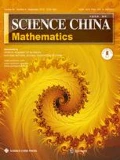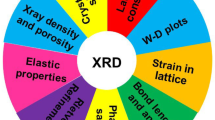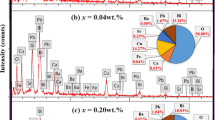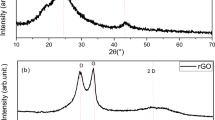Abstract
The coercivity of NdFeB magnets is determined by the coercivity of individual grains and the interaction between the grains composed of the magnets. The coercivity of individual grains and the intergrain interaction depend on the degree of the grain alignment, “tanθ type” Gaussian function is applied to describing the degree of the grain alignment. According to different coercivity mechanisms, there are different formula on the coercivity and the angular dependence of coercivity. The interaction between grains can be classified as the long-range magnetostatic interaction and the exchange-coupling interaction of neighboring grains. For the sintered magnet, the grain size is large and the grain boundaries are mostly separated by the non-magnetic phase. So, the long-range magnetostatic interaction is much stronger than the exchange coupling interaction and it makes the coercivity of the magnet composed of misaligned grains be bigger than that of the magnet composed of ideally aligned grains. The effects of coercivity of individual grains and the intergrain interactions are taken into account, and the starting field theory is in agreement with the experimental result for the coercivity of sintered NdFeB magnets.
Similar content being viewed by others
References
Kronmüller, H., Durst, K. D., Sagawa, M., Analysis of the magnetic hardening mechanism in ReFeB permanent magnets,J. Magn. Magn. Mater., 1988, 74: 291.
Givoid, D., Lu, Q., Rossignol, M. F. et al., Experimental approach to coercivity analysis in hard magnetic materials,J. Magn. Magn. Mater., 1990, 83: 183.
Kou, X. C., Kronmüller, H., Givord, D. et al., Coercivity mechanism of sintered Pr17 Fe75 B8 and Pr17 Fes53 B30 permanent magnets,Phys. Rev. B, 1994, 50: 3849.
Gao, R. W., Zhou, S. Z., Zhang, D. H. et al., Coercivity and its dependence on orientation magnetic field in NdFeB sintered magnets,J. Appl. Phys., 1995, 78: 1156.
Gao, R. W., Zhang, D. H., Li, H. el al., Effects of the degree of grain alignment on the hard magnetic properties in sintered Nd-Fe-B magnets,Appl. Phys. A, 1998, 67: 353.
Schrefl, T., Schmidts, H. F., Fidler, J. et al., The role of exchange and dipole coupling at grain boundaries in hard magnetic materials,J. Magn. Magn. Mater., 1993, 124: 251.
Kronmüller, H., Fischer, R., Hertel, R. et al., Micromagnetism and the microstructure in nanocrystalline materials,J. Magn. Magn. Mater., 1997, 175: 177.
Fukunaga, H., Inoue, H., Effect of intergrain exchange interaction on magnetic properties in isotropic Nd-Fe-B magnets,Jpn. J. Appl. Phys., 1992, 31: 1347.
Fidler, J., Schrefl, T., Overview of Nd-Fe-B magnets and coercivity,J. Appl. Phys., 1996, 79: 5029.
Author information
Authors and Affiliations
Additional information
Project supported by the National Natural Science Foundation of China (Grant No. 59571017).
Rights and permissions
About this article
Cite this article
Ruwei, G., Wei, L., Jiancheng, Z. et al. Effects of orientation and interaction of grains on coercivity for sintered NdFeB magnets. Sci. China Ser. A-Math. 42, 653–659 (1999). https://doi.org/10.1007/BF02880084
Received:
Issue Date:
DOI: https://doi.org/10.1007/BF02880084




